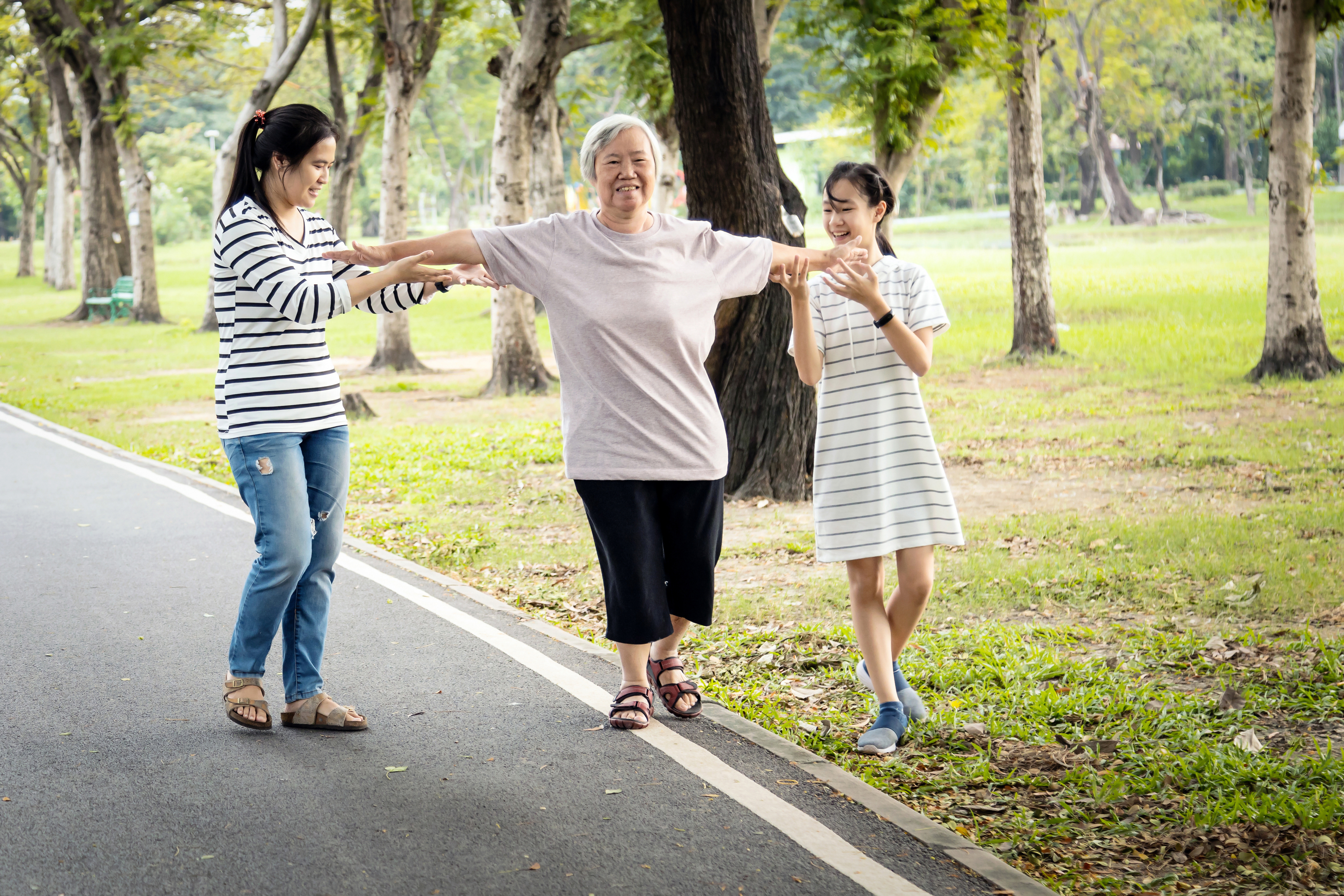When we ask, “what is fall risk,” we are asking how likely a person is to experience a fall. Everyone has fallen at one time or another, but those with lower fall risk are more able to maintain their balance on difficult terrain and recover their balance before fully falling. Fall risk often reflects how an individual experiences the world day-to-day. Below we’ll identify the three main indicators for fall risk, and other conditions to watch out for.
1. Balance
Balance is our ability to interact with our environment as we wish. While our eyes, muscles, and nerves work together to do this, the vestibular system of the inner ear is one of the most important and delicate organs when it comes to this sense. Made up of bone and cartilage, these small circular canals are filled with fluid. The position of the fluid gives the brain information to help create what we call our sense of balance.
Because this sense relies on a delicate internal organ, it is important for older adults to have their balance checked and fall risk measured routinely.
2. Gait
Gait refers to the way an individual walks and is a much more visual indication of fall risk. Supported by a 2019 study from Norway, changes in gait and lower gait speed correlate directly with higher fall risk. Changes in gait can be from an injury or illness, but more subtle or gradual changes can be easy to miss with a visual assessment. Tools like VSTBalance that use machine vision can often catch and highlight changes in a person’s stride down to seconds and centimeters and give clinicians an edge on preventative measures.
3. Function
Function is the ability of a body to perform necessary tasks within standard expectations. Often, we hear about terms like lung capacity and heart rate that help medical professionals benchmark how our bodies are working in comparison to how we feel. Muscle strength, dexterity, and reaction time all factor into function, and poor function directly relates to fall risk, as seen in this study from Australia. Function is often tested by measuring how quickly a person can stand from a seated position, react to physical stimuli, climb stairs, or pick up small objects from the ground.
These three factors (balance, gait, and function) can be impacted by several conditions in older adults. Side effects from medications can impact balance or induce dizziness. Recovery from an illness or injury can change a person’s gait, especially if they are compensating for a weak muscle. And age can reduce muscle function and reaction time, especially in the absence of regular physical activity. Tools like VSTBalance capture and track highly precise data to ensure that older adults can be assessed for fall risk and provided with therapy that drives results for a safer and stronger lifestyle.


